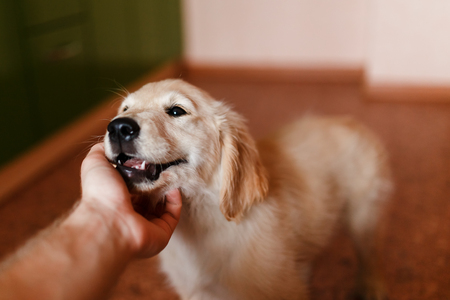1. Understanding Your Exotic Pets Escape Behavior
Exotic pets have unique instincts and behaviors that can make them excellent escape artists. Whether they climb, dig, squeeze through small spaces, or manipulate latches, understanding their natural tendencies is the first step in creating a secure enclosure.
Common Escape Behaviors by Pet Type
Different exotic pets have different ways of escaping. Knowing how your pet might try to get out will help you design an enclosure that keeps them safe.
| Pet Type | Common Escape Methods |
|---|---|
| Reptiles (e.g., snakes, geckos) | Squeezing through tiny gaps, pushing loose lids, climbing smooth surfaces |
| Rodents (e.g., hamsters, rats) | Chewing through weak materials, squeezing through bars, digging under enclosures |
| Aquatic Pets (e.g., turtles, frogs) | Crawling up corners, knocking off loose covers, jumping out of open tanks |
| Avians (e.g., parrots, finches) | Prying open cage doors, slipping through gaps, flying away when given an opening |
The Importance of Understanding Instincts
Your exotic pets natural instincts play a big role in their escape behavior. For example:
- Boredom and Curiosity: Pets left without stimulation may try to explore beyond their enclosure.
- Territorial Instincts: Some animals attempt to escape if they feel confined or stressed.
- Nocturnal Activity: Many exotic pets are more active at night and may attempt to escape while you’re asleep.
- Mating Behavior: Some animals seek to escape when searching for a mate.
Tips for Observing Your Pet’s Escape Habits
If youre unsure about how your pet might try to escape, spend time watching their behavior in their enclosure. Take note of where they focus their energy—are they constantly pushing on certain areas? Do they try to burrow? Identifying these behaviors early will help prevent future escapes.
2. Choosing the Right Materials for a Secure Enclosure
When building an escape-proof enclosure for your exotic pet, selecting the right materials is crucial. You need durable, escape-resistant components that will keep your pet safe while ensuring proper ventilation and visibility. Below, we’ll explore different material options and key factors to consider.
Mesh Size and Strength
If you’re using mesh or wire for your enclosure, the size of the openings matters. Too large, and your pet may squeeze through or get stuck; too small, and it could limit airflow. Here’s a quick guide to choosing the right mesh:
| Pet Type | Recommended Mesh Size | Material Recommendation |
|---|---|---|
| Small reptiles (geckos, anoles) | < 1/4 inch | Fine stainless steel mesh |
| Larger reptiles (iguanas, monitors) | < 1/2 inch | PVC-coated wire mesh |
| Rodents (sugar gliders, hedgehogs) | < 1/2 inch | Galvanized hardware cloth |
| Aquatic turtles & amphibians | No mesh (solid walls preferred) | Acrylic or glass panels |
Enclosure Walls: Solid vs. Mesh
The type of walls you choose depends on your pet’s needs. Some animals require solid barriers to prevent climbing or chewing, while others do well with ventilated mesh sides.
- Acrylic or Glass Panels: Ideal for reptiles and amphibians that need controlled humidity.
- PVC or Plastic Sheets: Lightweight yet sturdy, great for custom-built enclosures.
- Plywood with Sealant: Works for DIY enclosures but must be sealed against moisture.
- Wire Mesh Panels: Suitable for animals needing high airflow but must be securely attached.
Secure Locks and Fasteners
No matter how strong your materials are, weak locks can lead to escapes. Avoid simple slide latches or flimsy clips—many exotic pets are surprisingly good at opening them! Instead, consider these secure options:
- Latching Mechanisms: Spring-loaded latches work well for cages.
- Coded or Keyed Locks: Necessary for highly intelligent pets like parrots and raccoons.
- Screw-on Clips or Bolts: Ideal for larger enclosures that require extra security.
- Dowel Rods or Reinforced Hinges: Prevent doors from being pushed open from the inside.
Addition of Escape-Proof Features
Apart from strong materials, adding extra security features can further prevent escapes:
- Lip Edges on Doors: A small inward-facing lip can prevent pets from pushing doors open.
- Bolt Reinforcement on Hinges: Stops persistent animals from prying open doors.
- Burying Wire Underneath Ground Enclosures: Prevents burrowing animals from digging out.
- Tight-Sealing Lids for Aquatic Pets: Ensures turtles and amphibians don’t push up loose covers.
Selecting the right materials is one of the most important steps in creating a secure habitat for your exotic pet. By carefully choosing durable materials, ensuring proper locking mechanisms, and considering escape-proof designs, you can provide a safe and comfortable home for your pet.

3. Designing a Structurally Sound Enclosure
Creating an escape-proof enclosure starts with careful planning. You need to consider the size, ventilation, and entry points to ensure that your exotic pet is both secure and comfortable.
Plan the Right Dimensions
The enclosure should be spacious enough for your pet to move around freely but not so large that it becomes difficult to manage. Consider your pet’s natural behaviors—do they climb, burrow, or squeeze through tight spaces? Make sure the walls are high enough or buried deep enough to prevent escapes.
Ensure Proper Ventilation
Good airflow is essential for your pet’s health, but ventilation points can become weak spots if not designed correctly. Use sturdy mesh or drilled holes small enough to prevent escape but large enough to allow fresh air circulation.
| Ventilation Type | Pros | Cons |
|---|---|---|
| Mesh Panels | Provides excellent airflow | If too weak, pets may chew through |
| Drilled Holes | Difficult for pets to manipulate | May restrict airflow if too small |
| Louvered Vents | Prevents direct drafts while allowing air exchange | Might require additional reinforcement |
Select Secure Entry Points
A well-designed enclosure should have access doors that are easy for you to open but impossible for your pet to manipulate. Sliding latches, lockable doors, or even double-door systems can help prevent accidental escapes.
Tips for Escape-Proof Doors:
- Avoid simple push-to-open mechanisms; use locks or clips.
- If using sliding doors, ensure they have stoppers.
- Add a secondary latch as a backup security measure.
Avoid Weak Spots in the Structure
Poorly joined panels or flimsy materials can create vulnerabilities in the enclosure. Regularly inspect seams, hinges, and corners for any signs of wear or damage. Reinforce any weak areas with stronger fasteners or additional supports.
Key Takeaways:
- The enclosure must be appropriately sized for your pets needs.
- Adequate ventilation is necessary but should not create escape opportunities.
- Securable entry points prevent accidental openings.
- Avoid structural weaknesses by using durable materials and proper reinforcements.
A well-planned enclosure will not only keep your exotic pet safe but also provide them with a comfortable and enriching environment.
4. Reinforcing Weak Points and Testing for Security
Even the sturdiest enclosures can have weak points that clever exotic pets may exploit. Identifying these vulnerabilities and reinforcing them is crucial to ensuring your pet’s safety. Here’s how you can strengthen your enclosure and test its security.
Identifying Potential Weak Spots
Exotic pets are known for their intelligence and determination when it comes to escaping. Check these common weak points in your enclosure:
- Doors and Latches: Ensure they lock securely and cannot be pushed open.
- Gaps or Loose Connections: Small spaces between panels or loose fittings can allow escape.
- Material Strength: Some pets may chew, push, or dig through certain materials.
- Ventilation Openings: Make sure they are small enough to prevent squeezing through.
Reinforcement Methods
Once you identify weak spots, reinforce them using these methods:
| Weak Point | Reinforcement Method |
|---|---|
| Doors and Latches | Use locking mechanisms like carabiners or keyed locks. |
| Gaps or Loose Fittings | Add zip ties, screws, or additional fasteners to secure joints. |
| Chewable Materials | Replace with metal mesh or reinforced plastic panels. |
| Ventilation Openings | Cover with fine mesh or secure grates. |
Testing Your Enclosure’s Security
After reinforcing the enclosure, conduct a series of tests to ensure its effectiveness:
Pushing and Pulling Test
Apply pressure to doors, walls, and joints to see if they hold firm against force.
Latch and Lock Inspection
Check if your pet can manipulate latches by observing their behavior near access points.
Squeeze Test
If your pet is small, try sliding an object of similar size through openings to see if they could fit through.
Supervised Escape Attempts
Allow your pet supervised time in the enclosure while watching for any attempts to escape. If weaknesses appear, reinforce them immediately.
A well-secured enclosure not only prevents escapes but also keeps your exotic pet safe from external dangers. Regularly inspect and improve the setup as needed to maintain a secure environment.
5. Environmental Enrichment to Prevent Escape Attempts
Providing plenty of mental and physical stimulation inside the enclosure is essential for preventing escape attempts. Exotic pets often try to break out when they are bored, stressed, or lack proper engagement. A well-designed habitat with various enrichment activities will keep your pet entertained and less likely to seek an escape route.
Why Enrichment Matters
Enrichment helps mimic an exotic pet’s natural environment, encouraging natural behaviors and reducing stress. Without enough stimulation, pets may become restless and attempt to escape out of frustration. The right enrichment strategies can make a big difference in keeping your pet happy and secure.
Types of Enrichment for Exotic Pets
Different types of exotic pets require different forms of enrichment. Here are some common enrichment options:
| Type of Enrichment | Description | Examples |
|---|---|---|
| Physical Enrichment | Adds structures that encourage movement and exploration. | Branches, climbing platforms, tunnels, exercise wheels |
| Mental Stimulation | Keeps pets engaged with puzzles and challenges. | Puzzle feeders, hidden treats, interactive toys |
| Sensory Stimulation | Affects how pets perceive their environment through sound, smell, or texture. | Differently textured surfaces, scented items, safe plants |
| Social Enrichment | If appropriate, provides interaction with other animals or humans. | Supervised playtime, mirrors (for solitary pets), bonding activities |
How to Set Up an Engaging Habitat
Add Variety to Their Environment
A monotonous enclosure can lead to boredom. Change up the layout every so often by rearranging decorations and adding new elements like hiding spots or climbing areas.
Use Interactive Feeding Methods
Avoid just placing food in a bowl—make your pet work for it! Scatter feeding, puzzle feeders, or hiding food around the enclosure can turn mealtime into an engaging activity.
Create Hiding Spots and Safe Zones
Your exotic pet needs places where they feel safe. Hiding spots reduce stress and help prevent escape attempts caused by anxiety.
Mimic Their Natural Habitat
The more an enclosure resembles your pet’s native environment, the more comfortable they will be. Research your pet’s natural habitat and try to replicate its elements as closely as possible.
Avoid Overstimulation
While enrichment is crucial, too much stimulation can overwhelm your pet. Observe their behavior—if they seem stressed or avoid certain areas of the enclosure, adjust accordingly.


